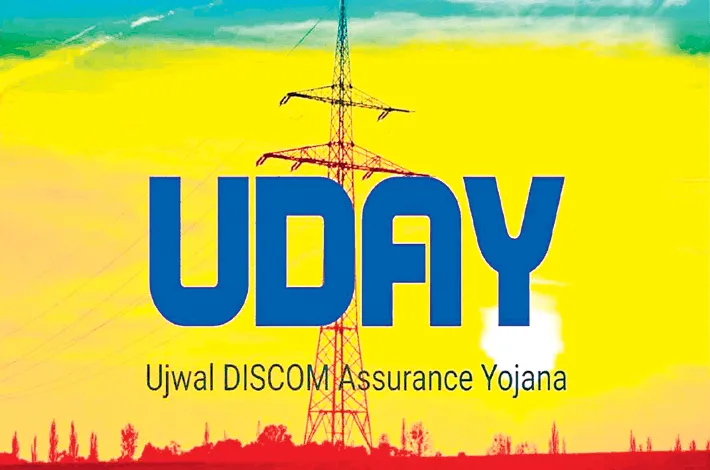India's latest discom lifeline: A Rs 1 trillion gamble on power sector revival
08-11-2025 12:00:00 AM

Generators and lenders, owed over Rs 1.1 trillion, face liquidity crunches, stalling new projects and risking stranded assets worth $100 billion in coal and gas plants. With power demand projected to grow 7-17% by 2025, the status quo threatens blackouts and economic stagnation
The Indian government, through the Ministry of Power, is actively advancing a major bailout and reform package for debt-laden state-owned power distribution companies (discoms). This proposed initiative, valued at approximately Rs 1 trillion (around $12 billion), marks the fifth such bailout in two decades and aims to address the sector's chronic financial woes—estimated at Rs 7.08 trillion in accumulated losses and Rs 7.42 trillion in debt as of March 2024. Unlike previous packages, this one ties relief to structural reforms, including privatization or stock market listings, to reduce political interference and improve efficiency.
States must either privatize their discoms (transferring at least 51% equity to private firms) or list them on a stock exchange with an 'A' rating within three years to qualify for funds. This would infuse liquidity to clear overdue payments to generators and transmission companies, while enforcing tariff rationalization and loss reduction. Aggregate technical and commercial (AT&C) losses hover at 21.73%, far above the global norm of 5-7%, driven by rampant theft, inaccurate billing, and outdated infrastructure.
The average cost of supply (ACS) exceeds average revenue realization (ARR) by Rs 0.39 per kWh, a gap created mainly by populist subsidies for agriculture and low-income households. These cross-subsidies, where industrial users foot the bill for free or dirt-cheap power to farmers, distort markets and deter investment. The COVID-19 pandemic widened the chasm, slashing revenues by 20% in 2020-21 as industries idled, pushing annual losses toward Rs 50,000 crore.
Previous bailouts—the 2001-02 Financial Restructuring Plan, 2012's scheme, 2015's Ujwal Discom Assurance Yojana (UDAY), and 2020's Rs 90,000 crore liquidity infusion—offered temporary relief but failed to enforce lasting change. UDAY alone restructured Rs 4.3 lakh crore in debt, yet AT&C losses barely budged from 18.9% in 2019-20 against a 15% target. Generators and lenders, owed over Rs 1.1 trillion, face liquidity crunches, stalling new projects and risking stranded assets worth $100 billion in coal and gas plants. With power demand projected to grow 7-17% by 2025 as per The Energy and Resources Institute (TERI), the status quo threatens blackouts and economic stagnation.
States like Uttar Pradesh, Andhra Pradesh, Madhya Pradesh, Maharashtra, Rajasthan, and Tamil Nadu—flagged for inaction—must now choose: sell 51% equity to private firms (with government absorbing debt), divest 26% for full management handover, or list discoms on stock exchanges with an 'A' rating. The bailout, channeled via Power Finance Corporation (PFC) and Rural Electrification Corporation (REC), clears overdue payments to generators, renewables, and transmission firms, injecting liquidity across the value chain. Proponents hail it as a "transformative oxygen," per corporate experts, restarting a "virtuous cycle" of payments that could save Rs 2,000 crore in central PSU dues alone.
Critics decry the package as "blackmail," echoing All India Power Engineers Federation (AIPEF) office bearers outburst against private intermediaries like the All India Discom Association (AIDA). Unions fear job losses and service erosion in privatization, citing Odisha's 2023 model where employee resistance delayed bids. Politically, it's toxic: free power promises win votes in agrarian states like Punjab and Tamil Nadu, where subsidies shield farmers from hiked tariffs. “The Hindu” reported Tamil Nadu's dilemma in 2020, seeking waivers on ACS-ARR bridging; similar pushback looms now. Without state buy-in, experts warn of failure, as in UDAY where only half the targets were met due to lax enforcement.
Stakeholders offer nuanced takes. While a section of generators and lenders welcome liquidity to pay suppliers like Coal India, Consumers and Industrial users decry cross-subsidies inflating their bills by 20-30%, while households fear tariff shocks. Environmentalists see upside in solar mandates but caution against fossil-heavy debt assumptions. States like Gujarat, with privatized discoms boasting 8% AT&C losses, model success; laggards like Uttar Pradesh (35% losses) are risky.
Ultimately, this bailout isn't just fiscal—it's a referendum on governance. By mandating privatization or listing within three years, the Centre bets on market discipline to deliver reliable, affordable power. If it succeeds, India edges toward energy security, powering its 1.4 billion ambitions. Failure? Another cycle of debt, blackouts, and blame.








